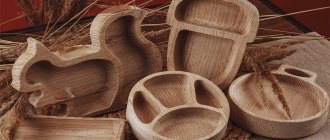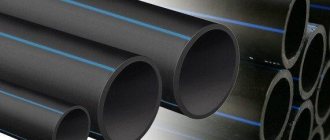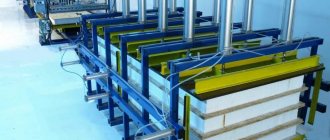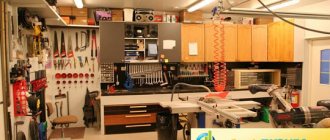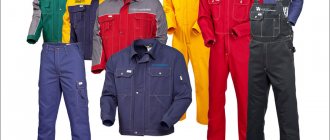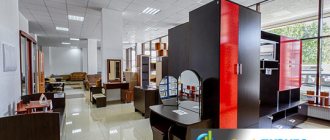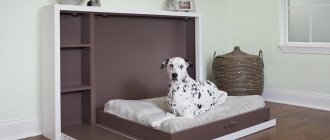One of the interesting ideas for organizing your own business is to establish the production of disposable paper tableware.
The idea is good - cups, plates and other plastic utensils are in great demand.
But here’s the catch: now everyone is very concerned about environmental cleanliness and safety.
The way out of this situation is to establish the production of paper tableware.
This product is environmentally friendly, and we have a significant number of paper recycling lines (to process waste) in our country.
Where to start producing paper tableware
Purchasing raw materials for such production is a necessary matter, but first you should think about how to equip the workshop.
After all, the choice of premises will depend on this.
A standard production line should perform the following functions:
- Form blanks;
- Solder seams
- Carry out cutting out excess elements.
It should be taken into account that to ensure the required range of products, you will need not one line, but at least 3-4.
This is due to the design features of the equipment itself.
The equipment for the production of disposable tableware includes such a part as a molding - a blank, which gives the necessary shape to the same cup.
So, one line - one molding, which produces dishes of the same size and shape.
Consequently, in order to create the required range of products, it will be necessary to rebuild this line - this is downtime, a waste of time and, as a result, money.
Therefore, you should purchase at least two types of equipment for the production of the most popular product categories.
Main advantages of disposable tableware
The undoubted advantages of disposable products are:
- Safety. Plastic products are made from flexible materials that cannot be injured or even broken.
- Hygiene. In catering establishments, the use of disposable tableware ensures the cleanliness of food containers.
- Saving. There is no need to waste time and money (detergents, water and heating it) on washing dishes.
- Convenience. Indispensable in establishments selling takeaway food and drinks.
Advantages of bio-ware
Paper tableware manufacturing technology
The raw material for disposable paper tableware is a special type of paper..
Many Finnish companies have been successfully producing such paper for a long time. But it is expensive.
Considering that you plan to produce consumables, it will not be profitable for businessmen to buy an expensive paper cup, the price of which will have to be included in the price of the same coffee.
You can buy paper from a domestic manufacturer, especially since it is not of much worse quality.
As a last resort, it will be possible to establish two lines:
- one for serious clients (expensive cafes and restaurants),
- another for public catering points (station cafes, etc.).
In anticipation of the start
There are many types of disposable tableware. Conventionally, products can be divided into several large groups: plastic, paper, wood and so-called environmentally friendly. The latter category includes both tableware made from biodegradable plastic and recent developments where cups and plates are made from a variety of raw materials such as cereals (edible tableware), cane, corn starch, leaves, bamboo, etc.
Before launching a project, an entrepreneur must clearly indicate what type of product he will produce. There are no universal lines at the moment, and launching an enterprise with a large number of installations for products made from different materials will require huge investments. Another difficulty is to obtain an effective technology for the production of disposable tableware. Finding detailed information in the public domain is not easy, and qualified technologists are worth their weight in gold. Therefore, the easiest way to establish the process is to train personnel from the equipment manufacturer.
Next, you should conclude agreements with suppliers of raw materials. There are not many of them on the territory of the Russian Federation, so you can consider options for cooperation with foreign partners. In any case, it is not advisable to focus on only one manufacturer, because a supply failure can cause downtime for a new enterprise.
Having decided on the above issues, you can begin searching for equipment and developing design documentation. As already mentioned, the financial barrier to entry into the market is quite high. Thus, only the purchase of a minimum set of equipment for the production of disposable plastic tableware will require about 12 million rubles. Having a well-developed business plan in hand, it makes sense to start working using investors’ funds.
Paper tableware market
The sales market for disposable tableware, including paper, is quite extensive - these include food service establishments, various sports complexes, cinemas (the list could take a very long time).
And the competition in the domestic market is quite small.
The cost of paper tableware is cheaper than plastic, so buying tableware from paper rather than plastic is not only more environmentally friendly, but also less expensive.
And all because of the excellent qualities of such dishes, which are now appreciated in our country:
- The paper cup warms up, which prevents hand burns.
- The dishes are environmentally friendly and absolutely harmless to health.
- Such dishes are an excellent advertising tool.
Therefore, those who decide to open this type of business are given the green light.
You just have to start and don’t turn anywhere from the chosen path.
Raw materials for disposable tableware
Material used in the manufacture of containers
Initially, disposable tableware was paper. Nowadays, laminated cardboard with a density of 130–280 g/m2 is chosen for its production. Lamination is performed in a layer of 10–20 microns. Such containers are suitable for advertising or creating branded tableware. For example, in a chain of coffee shops it is important to use cups with the name of the establishment and its slogan.
Until recently, Finnish paper was the favorite. Now the domestic production of high-quality cardboard is gaining momentum.
In the production of plastic tableware, different types of polymers are used as raw materials, depending on the required characteristics of the finished products and production capacity. For the full cycle, granulated polystyrene is used, which in appearance resembles foam spheres. For a shortened production cycle, polystyrene or polypropylene film is used.
Polystyrene is an amorphous polymer thermoplastic mass made from benzene and ethylene using polymerization. The material has a fairly high gas permeability, which is why it is often used in the production of cups for fermented milk products. The disadvantage of polystyrene is fragility.
Polypropylene is a partially crystallized polymer with thermoplastic properties. It is made from propylene by joining molecules together to form large molecules. This material is not as fragile, and its production is cheaper than polystyrene. The disadvantages of polypropylene are the complexity of the production technology, which requires strict adherence to temperature, and the impossibility of storing the polymer at subzero temperatures, which makes the raw material brittle.
How much money do you need to start a business?
To start a business, according to various estimates, you may need 1-2 million rubles. The main expense items will be:
- Rent of suitable production premises.
- Purchase and installation of equipment.
- Purchase of raw materials for production.
Another 10-15 thousand rubles will be required to register the business with the tax service and prepare the required documents. In addition, you should take into account current monthly expenses for staff salaries, taxes and utility bills.
Organization of production
Launching a project requires several preliminary activities:
- market and competition analysis in a specific region;
- drawing up a detailed business plan with financial calculations;
- registration with a government agency in one of the legal forms;
- acquisition of production space or its rental;
- hiring personnel in the required quantity;
- acquisition, installation and configuration of equipment;
- purchase of raw materials;
- product promotion, increasing the customer base.
Registration
You can register a business producing disposable tableware as an individual entrepreneur. The procedure includes several stages:
- preparation of a package of documents: passport, registration application, TIN, receipt of payment of state duty);
- contacting the tax authority;
- choice of tax burden option;
- Receiving a certificate of registration within 5 working days.
To produce disposable tableware, no licenses or special documents are required. However, products must comply with the standards prescribed in GOST. On this basis, the entrepreneur will have a quality certificate for the products produced.
Premises requirements
In addition to the standard GOST rules, at the legislative level there are no requirements for the premises where disposable tableware will be produced. When choosing production space, you need to consider the following nuances:
- the flooring should be ceramic tiles laid on top of a concrete screed;
- the walls are lined with ceramic tiles or other fire-resistant material to a height of at least 1.5 m from the floor;
- ceiling height – not lower than 4.5 m;
- supply and exhaust ventilation equipment;
- availability of communications: hot and cold water supply, heating, sewerage, three-phase power supply (380 volts);
- possibility of zoning.
The territory of the enterprise must include:
- blocks for placement and storage of raw materials and finished products;
- room for staff needs;
- WC;
- administrative part.
The optimal location for the enterprise would be an industrial zone within the city. Before starting production, it is necessary to obtain permits from the fire service and the sanitary-epidemiological station to ensure that the premises comply with all standards.
State formation
The company's staff will include the following vacancies:
- supervisor;
- technologist;
- accountant;
- production equipment adjuster;
- operator;
- handyman;
- cleaner;
- driver;
- watchman
Personnel should be recruited in numbers corresponding to production volumes.
What equipment to choose for the production of paper tableware
Equipment for the production of paper tableware is manufactured in the USA, Europe, China and Korea. Machines from the USA and Europe are considered to be the highest quality and most productive, capable of producing up to 250-300 products per minute. They also differ in higher cost, at the level of 1-2 million rubles. Cheaper analogues from China have a productivity of 125-150 products per minute and cost 500-600 thousand rubles. When purchasing machines, it is worth considering that they differ in the way they are soldered. Thermal soldering is considered the simplest and most reliable, but ultrasonic soldering provides better fixation and trouble-free operation even at high production speeds.
In addition to machines, a businessman needs to purchase replacement blanks for production, with different dimensions and shapes. To apply a logo and ornament to paper utensils, you should also buy or rent a machine for printing on paper. Additionally, you will need a paper cutting machine.
Production technology
The production of disposable tableware occurs according to the following algorithm:
- placing raw materials into an extruder with subsequent heating;
- bringing the mass to the required consistency;
- obtaining film by applying pressure to the mass;
- giving the canvas a given shape on a heat-resistant installation;
- forming blanks using a trimmer;
- cooling;
- packaging of finished products.
The technological process may include additional stages, for example, giving the product color by adding color to the mass.
Business relevance
The production of disposable plastic tableware is a relevant and profitable business with a fairly quick payback period. Despite the fact that this category of goods has been on the market for a long time, it continues to enjoy stable demand among consumers. Every year, the world produces products worth over 40 million dollars, most of it is sold in large cities. It should be taken into account that there is high competition in this area; in order to attract potential clients, aspiring entrepreneurs need to competently approach the organization of a business project.
Personnel and payback
To operate a full-fledged workshop you will need at least 6 people. Two of them will work in production, one in a warehouse, one will do accounting, one will drive a car, delivering finished products and delivering raw materials. You will also need a sales manager, whose role you can fill if you have the necessary skills. When expanding production, you will need 2 more people per line, an additional storekeeper and a driver.
Next, we will consider how profitable it is to engage in such a business. The total investment in equipment will be approximately 3 million rubles; you will spend another 300 thousand on starting production, rent and salaries. The net profit when operating a machine with a productivity of up to 300 sets per minute is approximately 14 thousand rubles per day. If you work 22 days a week, you will make a profit of about 300 thousand rubles, that is, the costs made will pay off in about 10–11 months.
Attention:
practice shows that it will take more time, since you are unlikely to be able to work at full capacity from the first month. Typically, payback occurs in 13–15 months.
Search for sales channels for finished products
Potential sales channels and, accordingly, clients of the entrepreneur:
- cafe;
- bars;
- restaurants;
- catering points;
- the shops;
- supermarkets;
- small wholesalers.
Roughly speaking, any food sales segment is a possible sales channel.
Before concluding a contract for the supply of products, it is necessary to provide a trial version of the product with a quality certificate.
You can search for clients directly by contacting one or another point, or launch an advertising campaign (it’s more effective to use both options at the same time);
- Outdoor advertising – banners, banners, electronic monitors. In addition, it is necessary to install signs in the area where the workshop is located so that new customers can be well oriented when searching for the enterprise.
- Internet – creating your own website, groups on social networks with customer support.
- Commercials on television and radio.
What documents are needed to organize a business?
When organizing a business, you can register as an individual entrepreneurship or a limited liability company. If you plan to receive high profits and cooperate with large enterprises, it is better to register an LLC. If you want to make a minimum investment and start the simplest production, then an individual entrepreneur is more suitable for you. When completing the documentation, you must indicate OKVED code 25.24.2 - “Production of plastic tableware, kitchen utensils and toiletries.”
You don't need a license. But you will need TU certificates, since your products will have to comply with SanPiN standards. In addition, there are certain State Standards that will need to be observed. Therefore, you should be well aware of such regulatory documents as GOST R 50962-96, GN 2.3.3.972-00, GN 2.2.4.1313-03, GN 2.2.4.1313-03, GOST 15820-82.
The taxation system is general, including VAT. It is especially convenient when organizing an LLC.
Equipment
The production line consists of the following pieces of equipment:
— Injection molding machine. Used for the production of tableware from polypropylene and polystyrene. — Extruder. Used for making sheets from granules. — Vacuum forming machines. The press is used to form a plate, glass or fork. The products are cut from the sheet using these machines or later.
The cost of equipment depends on the manufacturer and power. There are many suppliers on the Russian market. Equipment produced in Germany, Austria and the USA demonstrates excellent performance and reliability, but the cost of this equipment is much higher than lines from Korea and Taiwan, which have sufficient potential for small production volumes.
The price of injection molding machines ranges from 1,750,000 to 50,000,000 rubles. Used machines can be bought 3-4 times cheaper.
To purchase a new extruder made in Europe, you should prepare 25,000,000 rubles. Used or Korean equipment costs less - 4,000,000-6,000,000 rubles.
To produce 8 million plastic products per month, you should buy 2-3 vacuum forming machines. Each of them costs about 1,500,000-2,000,000 rubles.
Equipment for disposable tableware
- Disposable tableware is cheap to produce. Be like everyone else?
- How to make money by casting disposable plastic tableware ?
- How does the specialization and competence of an automation system manufacturer help?
- What benefits can be derived from optimal product design?
- Aspects of mold selection.
- Selection of an economical and high-speed injection molding machine.
- Stack packaging, how to choose the right packaging automation?
In Russia, there are two types of production of disposable molded tableware (forks, spoons, knives):
- centralized mass production on high-quality equipment from primary material with the possibility of subsequent automatic packaging;
- small-scale production using small-cavity, inexpensive molds (usually up to 20 cavities), often working only on recycled material and often renting injection molding machines (injection molding machines) for this purpose.
Problems with the “cheap” approach
Production of the second type is much more common, and their owners often save on everything to reduce costs. This starts with an inexpensive mold, often a semi-hot runner, followed by the use of as much cheap purchased recycled material as possible and cheap equipment - either your own or rented. Recycled material, as a rule, turns out to be of low quality, which leads to the following chain of events:
- the secondary quickly clogs the hot channel, which causes frequent and labor-intensive maintenance of the mold;
- because of this, many industries use cold runner molds, receiving waste for additional processing, as well as thick sprue, increasing cooling time and cycle time, lower product quality;
- recycled material is never of constant quality, as a result, the polymer “suitable and purchased as cheaply as possible” causes enormous wear on the injection molding machine screw, and the plasticization (and cycle) time increases significantly. The quality of material processing decreases, the product is of low quality and fragility;
- high wear creates an approach to the selection of equipment - the cheapest possible is chosen. And, naturally, unreliable. In addition, this is usually followed by investment in mold duplicates.
As a result, the disposable tableware plant experiences a significant reduction in productivity and quality, and most importantly, large downtime and problems with maintenance, as well as a decisive dependence on the price of recycled material. Nevertheless, such production is popular in Russia; they often “move” from renting one site to renting another site, because savings occur on each component. Are know-how and technologies required here?
The “cheap” sector of manufacturing disposable tableware is easily copied by a neighboring enterprise by purchasing cheap tools and equipment, and profitability mainly depends on how cheap it is possible to find an acceptable secondary product. Therefore, internal competition between such enterprises is enormous, and the “cheap” approach is accompanied by low profits. Cutlery is supplied in bulk, manual packaging is expensive, there is a high dependence on the human factor, the quality of the product is low, tools and equipment regularly break down, profits are minimal, and competition is high. It turns out to be a vicious circle.
How to differentiate yourself from the mass of manufacturers?
The leader in the sector of injection molded disposable tableware - shows a different approach to production - multiple equipment, high-quality equipment, emphasis on speed and automatic packaging of disposable utensils. Is it possible to doubt the effectiveness of the applied technical solutions and their optimality, integration methods and cost-effectiveness? Despite the fact that production can be further improved, the current result in the industry is that using technologies and methods different from the “cheap” approach, products are sold, firstly, in large quantities, secondly, expensively, and thirdly, packaged. And it is present in almost all stores in the country.
As far as the author of the article knows, in Russia today only Mysteria uses automated removal and packaging. Investing in expensive high-speed equipment, multi-place hot runner high-quality molds and packaging automation, working with primary materials allows you to stand out from the masses of other manufacturers and sell your products at high prices and with large profits. How to compete with this? To occupy a significant market share when planning a new or modernizing an existing production of disposable devices, it is not enough to simply repeat the moves of the leader. We must try to surpass it by making maximum use of technological competence and choosing progressive solutions.
Specialization and competence
The most interesting and highly focused component of the disposable tableware production system is automation. If there are a huge number of simple robotic pickers produced in the world, then there are only a few systems for packaging molded disposable tableware in PP bags. And the experience, competence and commitment of the manufacturing plant in such systems is decisive.
A long-time partner of our company, the Israeli company Imdecol (AB 2005) Ltd was renamed Arc Automation in 2011. Arc was originally a specialist manufacturer of IML robots, but since 2011 has focused on industry solutions - a truly reliable automatic bucket and handle assembly system and automatic disposable tableware removal and packaging . How have the implemented systems in the home region helped Arc move forward?
- Automation Arc Automation makes one movement less than similar Italian and other systems, following the main law of automation “fewer mechanisms = higher reliability and efficiency.”
- The newest and latest development is a packer of its own production - competitors (like Arc earlier) purchase packers, integrating them into their line. Packers available in the market operate continuously, whereas packing disposable tableware requires efficient step-by-step operation, so step-by-step operation is an option and adds cost to a conventional packaging machine. Our own packer of disposable tableware significantly reduces the cost of automation.
- Arc Automation uses its vast accumulated experience and offers customers a solution not only to the automation of pick and pack, but also a comprehensive flexible engineering solution for different budgets and tasks, offering optimal integration every time.
- Arc Automation uses a unique maintenance-free gripper that requires no maintenance, repair or replacement for its entire life.
Flexibility and optimal operation of the entire system
Arc's approach is reminiscent of a construction kit - the system can be built around an existing mold and injection molding machine, or it can involve completely new equipment. Arc can be responsible for product design and weight reduction while maintaining rigidity and strength. A flexible approach allows the customer to determine the balance between cost, performance and quality.
Product design:
- 0.1g of material can bring savings of about 40,000 US dollars per year. The customer provides samples of sufficient strength, and Arc, using its own unique software, offers optimization of the product design to reduce weight, while maintaining the specified rigidity of the leg (handle) and teeth (cup) of the product, the key points of rigidity are shown in the diagram;
- Printing 3D models of a product with optimized geometry to check the quality and ease of stacking (stacking) products in stacks;
- The special design of cutlery allows the use of molds with replaceable molds, which leads to a significant reduction in investment;
- The design of the products is designed in such a way that during periodic changes in manufactured products, retooling of the robot is carried out as quickly and simply as possible, which significantly reduces the risk of operator errors.
Mold design:
Molds for disposable cutlery (especially forks) are very sensitive to clamping force and are prone to flash when worn. Therefore, the task of correct selection of equipment is not to select the minimum permissible clamping force on a new mold, but to design a mold structure that ensures maximum service life.
- Choice of any duct system - from the simplest cold duct system, incl. fan-type (Arc is the only one who performs automation on cold-pressure molds) to a hot channel complex with a shut-off valve (valve gate) - an expensive solution, but with technical advantages;
- Arc offers its unique design for reduced clamping force and long mold life; or Arc offers its unique design to significantly reduce the cost of the mold
- For example, typical 48-section molds require approximately 450 tons of clamping force. The design from Arc allows you to work on a 350-ton machine with such a mold, using its know-how to avoid flash when the tooling wears out.
Injection molding machine:
Typically, casting disposable tableware with subsequent packaging is advisable when using at least 24 local molds. The higher the nestedness, the cheaper the unit of production. A fairly optimal solution is 48-local molds, which requires, as mentioned above, a 350-450 ton class injection molding machine. Which machines to use for disposable tableware ?
It is unprofitable to use conventional hydraulic injection molding machines in the production of disposable tableware. Do high-speed injection molding machines pay off? Compared to simple injection molding machines, they look more attractive. But the high cost of service and the high cost of parallel operations lead to high costs, while this type of machine is characterized by increased energy consumption and cost (compared to conventional injection molding machines), which greatly limits the profitability of production. The competitive environment forces us to look for ways to reduce production costs.
More and more companies are choosing all-electric injection molding machines, which offer precision and minimal failure rates, while the average maintenance costs are significantly lower than for hydraulic machines. Electric machines have proven themselves well and are replacing hydraulics step by step. But are all electric injection molding machines the same? And why do car prices vary so much? Is there a difference between injection molding machines from Japan, Europe and their cheap copies from China and Taiwan?
At the moment, Japanese cars take the lead in quality. These are the highest reliability indicators, efficient energy saving, low operating costs. Such achievements are explained by the enormous experience accumulated over the years of production. Indeed, all-electric injection molding machines have been mass-produced in Japan for more than 25 years, while European manufacturers began to develop this segment only a few years ago. There are up to 20 times more electric injection molding machines produced in Japan than in Europe.
Another important parameter that sets Japanese injection molding machines apart is the possibility of high-speed injection. This option makes it possible to quickly fill the mold cavities with a polymer melt with a minimal temperature difference. As a result, there is less internal stress in the product, and there is no need to increase the holding and cooling time to compensate for possible defects. The use of high-speed injection reduces cycle time and reduces the scrap rate. The Japanese manufacturer of all-electric injection molding machines Japan Steel Works (JSW) already offers high-speed injection on the international market today on machines with 76 and 84 mm augers with an injection pressure of more than 1800 bar, and with a 92 auger at 1610 bar. High-speed injection is also available on the domestic market for screws with diameters of 100 and 110 mm. Manufacturers from Europe offer electric machines with high-speed injection with a screw diameter of up to a maximum of 60 - 68 mm with an injection pressure of more than 1800 bar. Such European models began to be produced only recently; before that, high-speed injection was installed only on machines with a screw diameter of a maximum of 40-45 mm.
An important parameter is the horizontal distance between the columns. In particular, for the JSW J-350AD model, this figure is 810 mm (for competitors, as a rule, 710-730 mm), which allows you to place a “wide” mold (for example, 12x4 rows), this facilitates automation and does not increase time cycle (if the nests are located above or below the columns, the side robot will have to waste time moving to these areas).
Packing in stacks:
Packaging in polypropylene bags also affects the overall budget of the automation system. The first robotic picker in the packaging system stacks products in a magazine that follows the layout of the mold cavities, and the stack size is determined by the number of cycles. But if you need to make small stacks, for example, 10-12 pieces, you need faster automation of packing into bags, which increases the cost of the packaging machine compared to packing in stacks of 50-100 pieces. The choice of packaging machine depends on the type of bag material, the number of cavities in the mold, the size of the product (a teaspoon and a large spoon are very different from each other) and the overall casting cycle - all these factors affect the cost to a lesser or greater extent.
Wide range of automation:
There is an opinion that automation of disposable tableware is very expensive. Is it so? Arc Automation offers customers different solutions for different budgets and different tasks.
- The automation system can be used for both cold-runner and hot-runner molds;
- The robots used can be either side-entry (fast) or top-entry (cheaper and slower);
- Arc takes into account all factors of your production and will offer a personal solution
- Arc uses its unique maintenance-free gripper, which reduces both downtime for replacement and waste when the conventional gripper wears out.
Integration of the entire disposable tableware production complex:
Arc Automation's solution for casting disposable tableware can be anything from a customer-based machine and tooling solution to a complete line of disposable tableware , selected by Arc. In general, the integrated complex from Arc, without loss of performance, is cheaper than its competitors, while having a number of unique advantages. It is also possible to choose a very inexpensive automation solution, sacrificing productivity, and even apply automation to existing cold runner molds, which has not been used before.
Advertising and sales
In any production it is important to establish sales of finished products. Where are paper cups used:
- retail outlets offering various types of fast food;
- coffee shops and coffee bars offering takeaway drinks;
- cinemas where popcorn is very popular;
- companies servicing machines, selling various drinks, etc.
All these enterprises are your potential partners.
To promote your products, you can use the Internet (your website, social networks, etc.), as well as your own products, by placing on the walls of the cup, in addition to attractive images, also the manufacturer’s contacts.
Financial calculations
Organizing this business requires significant capital investments:
- purchase of a production line for the production of tableware - from 1,000,000 rubles;
- ordering the first batch of raw materials – from 70,000 rubles;
- documentation - from 30,000 rubles.
The cost of production of one unit of goods is from 0.25 rubles. It includes the costs of renting premises, salaries, utilities, advertising and the purchase of raw materials. If you produce about 8,000,000 products monthly and sell each product at a price of 0.31 rubles, the net profit will be from 480,000 rubles per month.
Total:
- starting capital: from 1,100,000 rubles;
- monthly profit: from 480,000 rubles;
- payback period: from 3 months.
